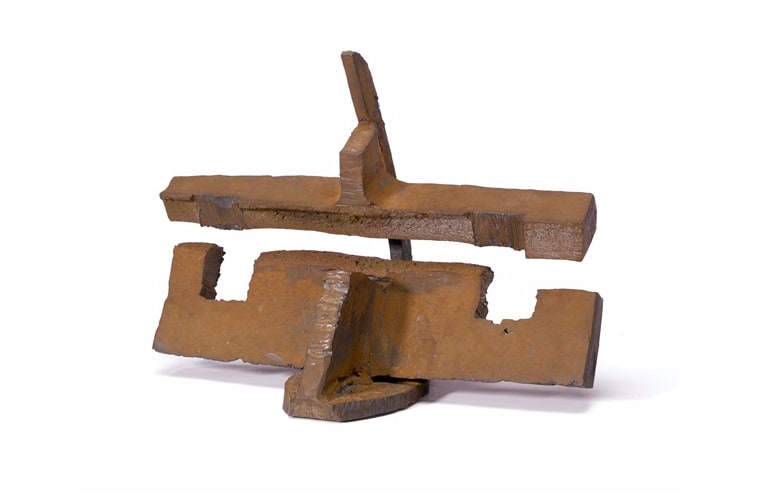
Mark Di Suvero American, b. 1933
Untitled, 1970
steel
11 3/4 x 16 1/2 x 9 in. / 29.8 x 41.9 x 22.9 cm
Copyright The Artist
Sold
Di Suvero’s smaller works often use cast-off pieces of steel and his monumentally scaled sculptures are made primarily from industrial I-beams bolted or welded together. Geometry and structure play an...
Di Suvero’s smaller works often use cast-off pieces of steel and his monumentally scaled sculptures are made primarily from industrial I-beams bolted or welded together. Geometry and structure play an important role in both of these constructions, much like the basic principles of architecture. Grounded in the practices of abstract expressionism that had dominated the New York art scene at his arrival, di Suvero engages space, line, and color to energize a work.
Expanding beyond purely hori¬zontal or vertical planes, he creates diagonals, pyramids, and ellipses that punctuate the spaces they inhabit. Sharp and rounded corners exist side by side, as do an array of lines—jagged, curved, and straight. The resulting sculptures, whether large or small, dominate and activate the environments they occupy, and, like the kinetic mobiles of Alexander Calder, they employ phys¬ics by drawing on the effects of time and motion.
Expanding beyond purely hori¬zontal or vertical planes, he creates diagonals, pyramids, and ellipses that punctuate the spaces they inhabit. Sharp and rounded corners exist side by side, as do an array of lines—jagged, curved, and straight. The resulting sculptures, whether large or small, dominate and activate the environments they occupy, and, like the kinetic mobiles of Alexander Calder, they employ phys¬ics by drawing on the effects of time and motion.